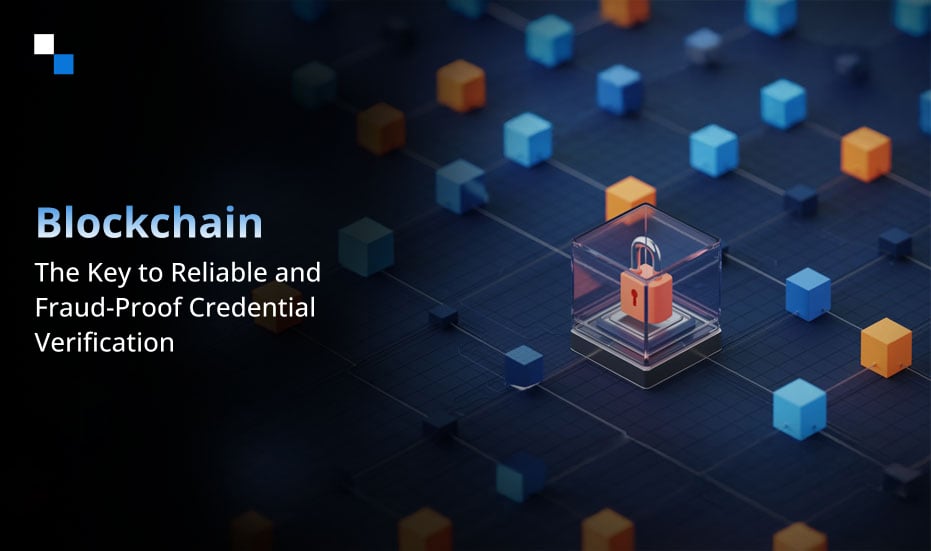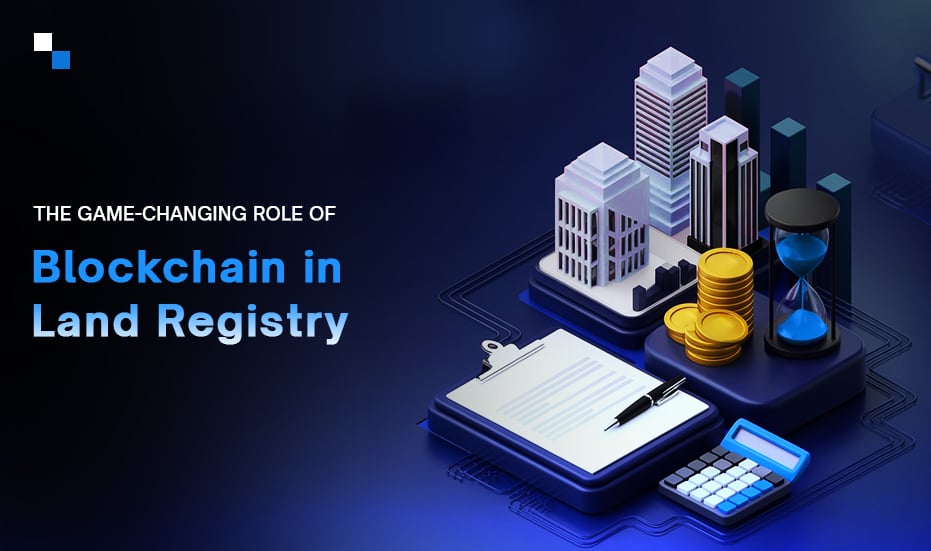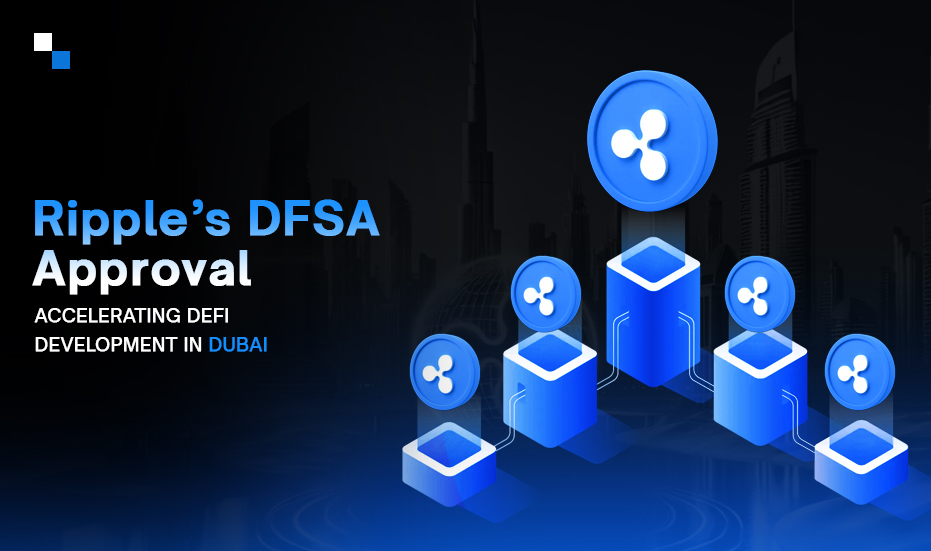
A Guide To Digital Marketplaces for Tokenized Real Estate
February 25, 2025
How Does Tether’s WDK Simplify The Integration of Non-Custodial Wallets?
February 25, 2025Millions of students complete their education each year and take a step toward higher education or a corporate job. This is when they are asked to provide proof of their qualifications. However, when they submit their documents, universities or employers are often lost in a sea of paperwork or worse, question the authenticity of their credentials.
Now imagine a different scenario, where students can share a digital version of their credentials that’s instantly verifiable, tamper-proof, and recognized globally. There are no more waiting weeks for verification, no more worrying about forged documents, and no more bureaucratic headaches. This transformation is possible by using blockchain solutions for education credential verification.
Blockchain credential verification is the ultimate use case of the technology in the education sector. It is solving age-old problems like fraud, inefficiency, and lack of transparency while empowering students, educators, and employers alike. In this blog, we’ll explore how blockchain credential verification systems can redefine the education landscape, making credential verification faster, safer, and more accessible than ever before.
The Current Challenges in Credential Verification
Before delving into the solution, it’s important to understand the problems plaguing the current system of credential verification:
-
Fraud and Misrepresentation
A study reveals that the global fake degree market surged from $1 billion in 2015 to $22 billion in 2022. Experts estimate that 4.7 billion individuals have possessed fake diplomas. One can easily imagine the magnitude of the problem posed by fake degrees and certificates. Individuals holding fake certificates are a threat to industries like healthcare & engineering.
-
Inefficiency
Traditional verification is a multi-step process that involves multiple intermediaries, such as educational institutions, employers, and third-party services. This complex system often results in delays, inefficiencies, and increased costs. Manual verification methods are also vulnerable to several errors and fraud that sometimes compromise the authenticity of academic credentials.
-
Lack of Standardization
Credential verification is challenging as different institutions and countries have varying standards and formats for issuing and verifying credentials. This lack of uniformity makes the process complex, time-consuming, inconsistent, and prone to errors. Without a standardized system, verifying academic credentials becomes inefficient, which may lead to delays and potential risks for employers, institutions, and students alike.
-
High Costs
Manual verification processes are labor-intensive and costly, especially for employers who need to verify credentials on a large scale. The need for extensive manual checks consumes valuable time and resources, increasing operational costs. This inefficiency can delay hiring decisions and negatively impact the recruitment process.
-
Data Privacy Concerns
Sharing sensitive academic records with multiple parties raises the risk of data breaches and unauthorized access. Without secure verification methods, credentials can be tampered with or misused, which harms the integrity of personal data and undermines the credibility of educational institutions and employers relying on these records.
Blockchain is Revolutionizing Credential Verification
Blockchain has the power to address the existing challenges of credential verification through its capabilities. The immutability feature of the blockchain credential verification system ensures the authenticity of the credentials, whereas its decentralized nature eliminates the need for intermediaries required for verification. Additionally, its cryptographic algorithms ensure that sensitive academic data is securely stored & shared only with authorized parties while reducing the risk of data breaches.
How Blockchain Credential Verification Platform Works
The following is a step-by-step breakdown of how blockchain credential verification works in the education sector:
Step 1: Issuance of Credentials
The first step involves educational institutions issuing digital degrees, certificates, or transcripts as tamper-proof and secure credentials on the blockchain. A unique cryptographic hash is assigned to each credential on the blockchain credential verification system to uphold authenticity.
Step 2: Storing on Blockchain
The credentials are further recorded on a decentralized ledger. Once the credentials are recorded on a blockchain platform, the data cannot be changed or tampered with. This immutability eliminates the chances of forgery or alteration, enhances the authenticity of the credentials, and protects them from fraudulent activities.
Step 3: Student Ownership & Access
Once the credentials are recorded on the blockchain, students receive a private key or a digital wallet that allows them to control access and share verified records with employers, universities, or verification agencies as needed. There is no need for intermediaries for credential validation.
Step 4: Verification by Employers or Institutions
When a recruiter or another institution needs to verify the credentials, they can simply scan a QR code or check the blockchain record. Since the data is already on the blockchain, verification is instant and trustless, without requiring third-party verification.
Step 5: Integration with Smart Contracts
Institutions can implement smart contracts to automate processes like degree issuance, grading verification, and eligibility checks, which further reduces administrative workload.

Key Benefits of Blockchain Credential Verification System for Stakeholders
The adoption of a blockchain credential verification system offers numerous benefits for all stakeholders involved:
For Students
- Ownership and Control
The blockchain credential verification system enables students to have full control over their academic records and share them with whomever they choose. Unlike traditional systems where institutions hold the data, students can decide who has access to their credentials.
- Portability
Blockchain-based credentials offer exceptional portability. They eliminate the hassle of carrying physical certificates that can be lost or misplaced. Whether applying for jobs or further education, students can instantly share their verified credentials.
- Lifetime Access
Using blockchain for credential verification is a strategic move as it allows students to gain lifelong access to their credentials. There is no need to repeatedly contact educational institutions for transcripts or certificates. It saves time and ensures that student’s records are preserved securely, even if the issuing institution ceases to exist.
For Educational Institutions
- Reduced Administrative Burden
Blockchain automates the verification process which drastically reduces the administrative workload for institutions. This allows staff to focus on core activities like teaching and research, rather than spending time on manual verification tasks.
- Enhanced Reputation
Education institutions that adopt credential verification using blockchain can position themselves as forward-thinking and innovative. This enhances their reputation among students, employers, and peers. It also helps attract more applicants and fosters trust in their credentialing processes.
- Global Reach
Blockchain enables institutions to issue credentials that are recognized and verifiable worldwide. This global reach helps institutions attract international students and make sure that their graduates’ qualifications are accepted across borders. It boosts their competitiveness in the global education market.
For Employers
- Efficient Verification
Employers can verify candidates’ credentials quickly and easily using a blockchain credential verification system. It reduces the time and costs associated with the hiring process. This efficiency is particularly valuable in industries where timely hiring is critical, such as healthcare or technology.
- Trust and Confidence
Using blockchain for credential verification is a game-changer as it ensures the authenticity of credentials while significantly reducing the risk of fraudulent documents. This fosters trust and confidence in the hiring process and allows employers to make well-informed decisions based on verified data.
For Governments and Regulatory Bodies
- Standardization
Blockchain can help standardize credential verification processes across different regions and countries. This harmonization simplifies cross-border recognition of qualifications and facilitates international mobility for students and professionals.
- Fraud Prevention
The immutable nature of blockchain significantly reduces the risk of credential fraud by ensuring that academic records cannot be altered or falsified. Blockchain credential verification system safeguards the integrity of the education system and maintains public trust in qualifications.
- Data Security
Blockchain’s cryptographic algorithms help the government securely store and share sensitive academic data that protects individuals’ privacy and prevents unauthorized access. This makes the blockchain credential verification system a reliable solution for safeguarding educational records in the digital age.
Conclusion
The traditional credential verification process is slow and often unreliable, raising concerns about authenticity. However, blockchain’s decentralized and immutable nature has significantly enhanced the credential verification process. Blockchain for credential verification has emerged as a game-changer for several stakeholders. From providing maximum credential control to students to reducing administrative burdens for educational institutions, the blockchain credential verification system strengthens each aspect of the education sector with trust, efficiency, and security.
Antier, a renowned leader in blockchain development, understands the potential of technology and how it can give an edge to the education sector. With expertise in building blockchain solutions for education sectors, Antier enables institutions to implement robust credential verification systems that prevent the serious growing concerns of fake certifications and degrees. Our talented blockchain development workforce enables universities, employers, and regulatory bodies to seamlessly adopt a digital-first approach to academic credentials. We are committed to driving this evolution and ensuring that credential verification becomes faster, more reliable, and universally accessible in the digital age.
Partner with us today for advanced blockchain solutions!



